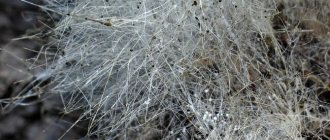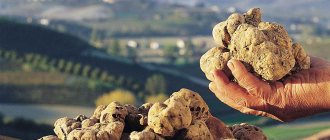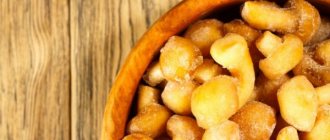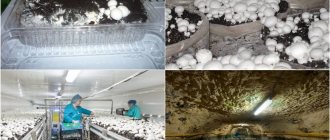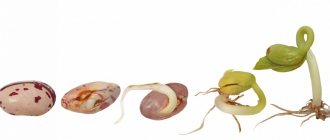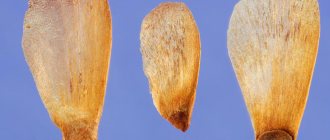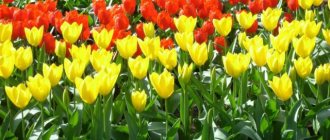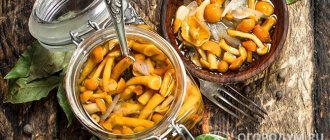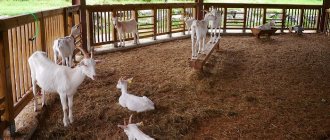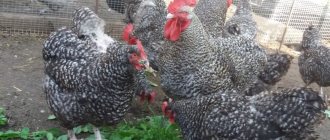Why grow honey mushrooms?
Honey fungus is a mushroom common in the central zone, growing in colonies of 30–80 pieces in coniferous and deciduous forests. Its cap is brown, yellow-brown or red and reaches 3–8 cm in diameter, and its thin stem is 10 cm in length. It is not easily edible, but also one of the most delicious mushrooms, which explains the relevance of growing honey mushrooms as a business:
- Mushrooms are added to meat dishes, fried with chops, and made into rolls. Vegetable salads, stews, fish soups and hodgepodge with honey mushrooms are no less tasty;
- Honey mushrooms are twisted into mushroom paste or simply crushed to be used as a filling for pies or an ingredient for sauces;
- Finally, honey mushrooms are consumed as an independent side dish. They are stewed, fried in oil or marinated with spices and onions.
But honey mushrooms are attractive not only for their culinary value. In terms of the content of vitamins and microelements important for humans, they can compete with such healthy foods as greens and berries. Here are some of their qualities:
- Mushrooms are a very filling food and at the same time contain a small amount of calories. They can be included in healthy diets;
- Honey mushrooms contain natural phytoncides that inhibit the development of many types of staphylococcus and E. coli;
- Mushroom fibers are composed of chitin, which helps strengthen the tissues of nails, hair and bones, and also absorbs toxins in the intestines;
- Organic acids and multivitamins included in honey mushrooms stimulate the immune system and increase the body’s resistance to viruses;
- Regular consumption of mushrooms reduces the risk of developing malignant tumors and strengthens cell membranes;
- Finally, the microelements contained in honey mushrooms help regulate blood pressure, normalize heart function and improve well-being.
Types of honey mushrooms for growing
Scientists count more than three dozen species of real honey mushrooms and several false ones, which are dangerous to eat. Edible varieties vary in size, shape, color and fruiting period. Suitable for growing honey mushrooms in the country:
- Winter honey fungus. It has a yellow-brown hemispherical cap with a diameter of 2–8 cm, covered with a layer of mucus. The leg reaches a length of 5–8 cm and a thickness of 6–8 mm. In late autumn and early winter, the mushroom grows on willows, poplars and birches;
- Summer honey fungus. It is distinguished by a dense fibrous stalk 6–8 cm long and 7–12 mm thick, on which grows a hemispherical golden cap with a diameter of 4–8 cm. It is found from July to September on the stumps of deciduous and fruit trees;
- Autumn honey fungus. A mushroom with a semicircular cream cap with a diameter of 4–10 cm, matte due to the scales covering it. The leg is also scaly, 7–10 cm long and 10–15 mm thick. Grows in October-November on poplars, oaks, pines and spruces;
- Spring honey fungus. Its cap is convex, 4–9 cm in diameter, and over time changes its color from brick to yellow-brown. The leg is sinewy, 6–8 cm long and 8–10 mm thick. Appears in May on oaks, beeches and pines;
- Honey fungus. It has a semicircular pale yellow cap with a diameter of 4–5 cm with a noticeable hump in the center. The leg is velvety, 4–8 cm long and 3–5 mm thick. Found from July to October in clearings, forest edges and meadows;
- The honey fungus is bulbous. It is distinguished by a fleshy semicircular cap of brown color with a diameter of 4–10 cm, matte due to the scales. The leg is reddish, 10–15 mm thick and 7–10 cm long. It grows in birch and coniferous forests;
- The honey fungus is dark. A mushroom with a large brown cap, 4–9 cm in diameter, covered with dark scales. The leg is 7–9 cm long and 10–15 mm thick; remains of the bedspread are visible on it. Appears at the end of summer on coniferous and deciduous stumps;
- Thick-legged honey fungus. It has a semicircular scaly cap of gray-yellow color, up to 4–8 cm in diameter. The stem is 5–9 cm and 5–15 mm in diameter and is also covered with scales. It is found in early autumn on the soil in spruce and pine forests;
- Poplar honey fungus. Its dark brown spherical cap with a diameter of 4–6 cm is covered with a network of cracks. The leg reaches a length of 5–8 cm and a thickness of 8–10 mm. The mushroom prefers poplars, willows, birches, beeches and other deciduous trees;
- Garlic is big. It is distinguished by a cap with a diameter of up to 7 cm, translucent at the edges. The leg is sinewy, 5–12 cm long and 5–8 mm thick. The mushroom pulp has a piquant garlicky smell, and is therefore suitable for seasoning.
Growing conditions
Regardless of the type of mushrooms, you can grow edible mushrooms in an apartment, a greenhouse, or even a country house, observing several conditions that contribute to a long-term harvest. The list of recommendations includes:
- moderate temperature, both in winter and summer. The thermometer should show no more and no less than 16-19 degrees;
- increased air humidity;
- good daylight;
- closed, heated room in winter and open space with good ventilation in summer;
- spraying against pests.
Business Features
Due to the ease of organizing a business, modest investments and the growing demand for goods, mushroom growing as an area of agricultural activity is becoming increasingly popular among domestic entrepreneurs. However, most of them prefer to deal with oyster mushrooms and champignons, trying to find a free niche in an oversaturated market. At the same time, there are still very few large farms for growing honey mushrooms in Russia, and 80% of the products end up in stores from Poland or China. Therefore, a novice entrepreneur producing tasty and high-quality mushrooms may well become one of the main suppliers of local restaurants and supermarkets. It is also necessary to mention that:
- Honey mushrooms grow well in artificial conditions. If you provide them with the necessary temperature and humidity, you can get fresh product all year round;
- Unlike types of business such as growing potatoes or raspberries, making money from honey mushrooms does not require large areas and heavy equipment;
- In popularity, honey mushrooms are second only to champignons, oyster mushrooms and porcini mushrooms. Any store is ready to accept them frozen or pickled;
- The substrate for growing honey mushrooms on a personal plot is made from simple ingredients and costs a penny. It is not difficult to prepare it yourself;
- Despite the small weight of the bunch, the yield of honey mushrooms is quite high. From a square meter of beds, you can collect 15 kg of mushrooms every two months;
- Technologically, this business is no more complicated than growing champignons at home from ready-made compost. Even a beginner can figure it out.
Marble mushrooms at home
One of the delicious honey mushroom species is the marbled honey mushroom. It is served in high-end restaurants and cafes as a main dish. They make delicious gravy, appetizers and interesting dishes, combined with fresh herbs, ground nuts and mashed potatoes.
Unlike many breeds, they can be cooked without heat treatment, soaking and washing. Their fragile structure forces chefs to treat them like fragile works of art.
You can grow marble mushrooms using classical methods. However, if the mushroom picker doesn’t have time to infect stumps and glass containers, you can try using the lazy method. According to reviews from many customers, the Leomax mushroom box copes well with the germination method and allows you to harvest a small harvest in a short time. It is difficult to say how effective this method is! The only thing that can be noted is that it costs a lot compared to classical methods.
Methods of growing honey mushrooms
Honey mushrooms are wood-destroying fungi, so they most often form their colonies on fallen trees, old stumps and a bed of dry grass. On the farm, conditions close to natural are created for them, by planting the mycelium in a similar environment. There are several ways to do this:
- Growing honey mushrooms in jars. The mushroom substrate prepared from sawdust and bran is poured into ordinary glass jars with a capacity of 2–3 liters. After adding the mycelium, they are kept on the balcony or windowsill, collecting up to 500 g of mushrooms from each;
- Growing honey mushrooms on sawdust. The method is similar to the previous one, but the containers for the substrate are durable plastic bags measuring 15 x 30 cm. They can be placed in the basement or garage, where it is cool and quite humid;
- Growing honey mushrooms on stumps. Fresh, still damp stumps of pine, willow, birch or aspen are used. The holes made in them are filled with mycelium, after which the cut is covered with film or earth. The harvest can be expected in six months;
- Growing honey mushrooms on chocks. Instead of stumps, logs up to half a meter long and 10–15 cm in diameter are often used. They are populated with mycelium and placed in a cool, dark place, watered periodically. Honey mushrooms also appear after 5–6 months.
Methods and technologies
In artificially created conditions, honey mushrooms are grown in various ways. Stumps, greenhouses and even jars are used for this. Each option implies certain features that must be taken into account to obtain a good harvest and a quality product.
Honey mushrooms on stumps
This method attracts many people due to its minimal costs and maximum proximity to natural conditions. It is better to choose stumps from birch or spruce trees, but apple, pear, aspen or poplar are also suitable. Summer mushrooms prefer deciduous trees.
Stumps must meet the following requirements:
- sufficient wood density;
- absence of rotten areas and areas damaged by bark beetles;
- sufficient humidity;
- diameter not less than 15 cm.
The stump must be moistened not only from the outside, but also from the inside to the very core. You can moisten it yourself by watering it abundantly for 1-2 days. Water can be poured with a bucket or in portions from a hose.
A sufficient level of humidity is indicated by a rich dark color on the cut. If you cut off a small piece, liquid will ooze from it.
Growing from mushroom mash (spores)
Mushrooms can be planted from May until the end of summer. You must act according to the following algorithm:
- Select overripe caps with dark brown undersides.
- Fill the selected caps with natural water. It should not contain chlorine, therefore water supply is not used for these purposes.
- The raw materials should be soaked in water for 24 hours.
- After the allotted time, the caps must be kneaded with your hands directly in the water.
- Pass the resulting mass through gauze folded in several layers several times.
- The prepared stump is watered with the resulting spore mash. This can be done conveniently using a syringe.
- Recesses are made on the vertical parts of the stump, which are also filled with mash. Afterwards they need to be sealed with forest moss or wet sawdust.
For one medium-sized hemp you need to use about a liter of mash.
Mushrooms planted in this way take a long time to hatch. You will be able to enjoy the fruits of your labors only after a year and a half.
Honey mushrooms bear fruit on one stump for about 5 years. During this time, it is destroyed, and the mushrooms can move to the ground. If there are trees nearby, they will attach to large roots.
This video explains how to choose the right stumps for growing mushrooms on them:
Growing from mycelium
To grow honey mushrooms on a stump, you can use not only mash, but also particles of mycelium. This method attracts the faster appearance of the first harvest.
It is better to take the mycelium from an almost rotten stump. You should choose an area where there are many light cream threads and a strong mushroom aroma.
You must act according to the following algorithm:
- Separate part of the mycelium and divide it into pieces 1-2 cm in size.
- Make indentations in the prepared stump. You can make 5-7 recesses on the vertical sides, 2 at the ends.
- Place the pieces of mycelium in the made recesses, covering them with moss or sawdust.
- Cover the end of the stump with polyethylene, pressing it down with a heavy weight. This is necessary to maintain humidity.
- For the winter, cover the stump with spruce branches. In the spring, snow must be removed from it so that melt water does not get inside. Otherwise, the harvest will appear later.
- The spruce branches need to be removed at the beginning of summer.
When growing honey mushrooms, there is a risk of infection of nearby crops: placing the mycelium on a living tree causes its death. To avoid such a nuisance, you should organize trenches 0.3 m deep and 0.1 m wide around the stumps.
Until the mycelium germinates, infected stumps or logs can be kept in the basement. During this time they should be covered with straw. It is recommended to wipe basement walls and floors daily. This measure is necessary to maintain optimal humidity levels.
Honey mushrooms in the greenhouse
This growing method is attractive because it produces large yields by creating an optimal level of humidity. For cultivation, a controversial chatter is used, which is prepared in the same way as for infecting stumps.
Further actions are performed according to the following algorithm:
- Determine a corner in the greenhouse for growing mushrooms and place half-rotten logs there. If you don’t have them, you can use scraps from logs, placing them in bags.
- Spray the prepared wood with mash.
- Use rainwater for irrigation. It is better to carry out this procedure from 12 to 17 hours. During this period, it is better to irrigate the logs every hour, but only for 5 minutes.
When grown in greenhouses, the harvest can be harvested as early as mid-June. Harvesting usually continues until autumn.
Growing honey mushrooms in jars
If you don’t have your own plot, honey mushrooms can be grown even in an ordinary apartment. To do this, use jars that are placed on the windows. This method is only suitable for winter mushrooms.
Banks should be chosen with a volume of at least 1 liter. You can use plastic bags instead.
For growing honey mushrooms, it is better to choose windows on the north side, since they need shade, and direct sunlight is destructive.
To grow honey mushrooms in jars, you need to use a substrate. To do this, mix one part of bran with 3 parts of sawdust (preferably from hardwood). Additionally, you can use corn cobs (chopped), buckwheat husks, and sunflower husks.
To grow honey mushrooms in jars, mycelium is used, which can be purchased in a specialized store or from a private seller. You must act according to the following algorithm:
- Pour the prepared substrate with water and leave for a day. Then squeeze it out and place it in jars, leaving them half empty.
- Take a stick with a diameter of 15-20 mm and make holes in the substrate to the bottom of the dish.
- Pasteurize the jars. This procedure is necessary to eliminate pathogenic microflora and prevent mold. To pasteurize, the jars are placed in a large container of hot water and simmered for an hour over low heat. The next day you need to repeat the manipulation.
- After the jars have cooled to 25 degrees, close them with perforated lids (made of plastic). The diameter of the holes should be no more than 2 mm.
- Introduce mycelium through the holes in the lid. It is better to do this with a syringe. The volume of mycelium should be approximately 5% of the volume of the substrate.
- Place the jars in a warm place for a month. The ambient temperature should be 23-24 degrees.
- When the mushrooms begin to hatch, the jars can be moved to the windowsills. In winter, they can be placed on the balcony if the temperature there is not lower than 13 degrees.
- Over time, the grown mushrooms will reach the neck of the jars. In this case, the lids must be removed and a funnel made of cardboard so that further growing mushrooms do not go beyond its boundaries.
- Mushroom caps must be moistened periodically to maintain a humidity level of about 90%.
At the preparatory stage, the substrate can be fed. To do this, mix 25 g of corn and oatmeal and 8 g of starch. This volume is calculated for 1 kg of substrate.
The first harvest is harvested within half a month after the mycelium sprouts. An average of 45 days pass from the moment of infection with mycelium. If the technology is followed, one three-liter jar can provide up to 1.5 kg of mushrooms.
Instead of pasteurizing jars of substrate, you can boil the prepared mixture. To do this, fill it with water for 10 minutes to swell. Then the composition is cooked for 45 minutes over low heat, periodically adding water so that the mass does not burn. At the end, the excess water must be drained and the excess liquid evaporated. The substrate should be moist, but not wet. Then they proceed according to the standard scheme.
Mycelium can be placed not only in prepared holes, but also mixed with the substrate. This can only be done after the mixture has cooled to 25 degrees. To mix the mycelium with the substrate, use a wooden spatula, which must first be sterilized. The resulting mixture is placed in jars.
Holes in the lid must be made without fail. This is necessary to remove gases emitted by fungal spores. Instead of a perforated lid, you can use fluffy cotton wool.
To obtain mushrooms regularly, it is necessary to prepare jars at intervals of 1-1.5 weeks.
See the experiment on growing honey mushrooms in a jar and its result:
How to choose honey mushroom mycelium?
Strictly speaking, honey mushrooms can also be propagated by spores. But this technology looks quite complex and unreliable, so the vegetative method is often used for planting - adding mycelium to the nutrient medium. It is supplied in two forms:
- Sticks with mycelium. They are more suitable for growing honey mushrooms at home on stumps, since using them in business is too expensive;
- Grain mycelium. It is made from boiled wheat, which is infected with mycelium under sterile conditions. Per kilogram of substrate you need only 10–20 g of such mycelium.
You can buy mycelium mushrooms in online stores, nurseries and from farmers who deal with this business professionally. To avoid getting old and missing mycelium instead of fresh, you need to know the criteria for assessing its suitability. So:
- High-quality mycelium has a white or delicate cream color. The presence of dark, green or brown spots indicates damaged material;
- The grains should be 80–90% covered with mycelial hyphae. If the mycelium is visible only on half of the package, the quality of the product is questionable;
- It is not allowed for liquid to accumulate at the bottom of the package, for the contents to acquire a sticky consistency, or for the mycelium to develop a sour or sulfurous odor;
- Mycelium should be stored at a temperature of 2–4°C. When heated to room temperature, it begins to germinate and deteriorate, and when frozen, it dies.
Honey mushrooms from mycelium
After the mycelium has settled in the stumps, it must be covered with a layer of film. This is necessary to create optimal development conditions. If properly cared for, the mycelium will allow you to harvest your crop for five years.
It should be taken into account that even ordinary, old logs and boards can be infected with mycelium. To do this, add spores to the water, mix, and then pour it over the log. After this, optimal care should be provided, namely: regular irrigation, maintaining the required level of humidity.
Where to grow honey mushrooms?
Since the farmer’s main task is to obtain the maximum yield, he should try to provide ideal conditions for the mushrooms: this result can only be achieved in an isolated room. In order not to spend money on building a separate building, the logical thing to do is use a basement, barn, garage or heated greenhouse: as a rule, the area of these objects does not exceed 50 m², which is quite enough for a beginner. The following should be highlighted here:
- Soil preparation and sterilization chamber;
- Substrate inoculation and packaging chamber;
- Growing and fruiting chamber.
No extraordinary repairs are required to grow honey mushrooms, but cleanliness is required to get a good harvest. Here is a minimum list of preparatory work that an entrepreneur must carry out:
- The floors in the cells are covered with concrete to prevent the entry of mice and insects, as well as to prevent the accumulation of moisture from the ground;
- To destroy flies and other pests, before sowing, the premises are treated with sulfur bombs and pesticides for 10–12 hours, and then ventilated for two days;
- Walls and ceilings are painted with lime and copper sulfate. To protect against fungus, this procedure is repeated every two to three months;
- At the beginning of each growing cycle, shelves and tools in the basement are washed with formaldehyde or alcohol. Disinfection mats are placed at each entrance.
On logs
Decks are often used to grow mushrooms. Choose a log with bark that is not damaged by rot or beetles. Diameter from 20 cm. From them you need to cut chocks 40-50 cm high, soak in water for a couple of days. When the liquid has drained, make 4 cm holes. Fill with sawdust and add mycelium or pour in a spore solution.
Logs prepared in this way can be placed in different ways:
- dig vertically in a shady area or place it in a large barrel, which is placed on the balcony;
- put in a trench 15 cm deep and sprinkle with earth and sawdust;
- if the chocks are not high, they can simply be placed on the floor in the basement.
For normal growth of these mushrooms, constant humidity and temperature from 10 to 25˚ are required. If they are bred indoors, it is important to ensure normal ventilation.
How to prepare the substrate for mushrooms?
As with growing porcini mushrooms at home, for honey mushrooms you need to prepare a nutrient medium containing the lignin and cellulose they need. These substances are found in abundance in ordinary hardwood or fruit sawdust, which can be purchased at your local sawmill. What to do next:
- To plant honey mushrooms, mix 85% sawdust or crushed straw, 10% wheat or rice bran, 1% sugar or honey;
- The mixture is poured with water, covered with plastic wrap and left for a day. The next morning, 3% lime and 1% gypsum are added to it in the form of aqueous solutions;
- The acidity of the finished substrate should be in the range of pH7–7.5. If you need to increase this indicator, add a little chalk;
- Finally, 1% bioactivator is added to the mixture, loaded into a sterilization tank and poured with boiling water, stirring constantly;
- The tank is placed on the stove or the heating elements are turned on, maintaining the water temperature at 85–90°C for 5–6 hours. The finished substrate is laid out on a grid for drying.
Growing on stumps at home
For this you will need the stumps of deciduous trees: birch, aspen, poplar, apple tree, pear. It is important to consider that the stump should not be affected by rot or tinder fungi. A couple of days before adding mycelium, the stumps should be moistened with water.
Here you can use both purchased and handmade materials. To make a handmade one, you need to collect twelve mushroom caps and soak them in water for a day. It is important to know that water from standing reservoirs is not suitable for such purposes, as it may contain pathogenic bacteria and microorganisms.
The caps are kneaded and filtered through cheesecloth. The solution is poured over the end and sides of the hemp. To increase the chance of infection of the stump, you can make holes in the wood a couple of centimeters deep. With proper care and placement, you will be able to see the first results after a couple of years.
The infection procedure can also be carried out using wooden sticks infected with mycelium. This is done in mid-spring, when the sun is already hot and can dry it out. Therefore, the stump must be covered with a thin layer of straw, and covered with branches for the winter.
How to plant honey mushrooms?
Inoculation of the substrate with fungal mycelium is carried out in a perfectly clean room, working with sterile gloves on a disinfected table surface. To grow honey mushrooms on an industrial scale, only grain mycelium is used, which is removed from the refrigerator a day before and warmed at room temperature. Further:
- The heated mycelium is removed from the packaging and thoroughly kneaded into individual grains. There should be no lumps or compactions left in it;
- Before inoculation, the physical characteristics of the soil are checked. Optimal indicators are temperature 20–24°C and humidity 62–65%;
- The mycelium is mixed with the substrate and poured into a 2-3 liter thick polyethylene bag. The mycelium consumption is 1–2% of the soil weight;
- A filter made of cotton wool, padding polyester or multi-layer paper is placed on top so that the soil does not dry out due to moisture evaporation;
- The bags are placed vertically in the incubation chamber, where the humidity is maintained at 75–80% and the temperature is 21–24°C. There is no need to ventilate or light it.
In bags
It is easy to grow these mushrooms in bags filled with substrate. Sawdust of any species except oak is suitable. Add oats, barley, sunflower or buckwheat husks, and chalk to the sawdust.
Boil the substrate and sterilize. Then dry it and fill it into plastic bags. For 2 liters of substrate, 20 g of mycelium is added. You can use bags of any size, mix the mycelium with the substrate. Place damp cotton wool on top, tie and leave at a temperature of 14-16°. After 3-4 weeks, bumps form on the surface of the bags. These are the fruiting bodies of fungi. The bag needs to be untied and the cotton wool removed.
For honey mushrooms to grow upward, leave it like that. But you can cut the bag where the bumps are so that the mushrooms can grow through them. This method is more often used if the bags are large. If there is not enough light, the honey mushrooms will stretch out, the legs will be thin, and the color will be light.
Honey mushroom growing technology
Under the above climatic parameters, the substrate is overgrown with mycelium in 15–20 days. At this stage, you don’t need to do anything - just monitor the temperature and humidity in the room daily. After three weeks you can begin the active phase. How to grow honey mushrooms at home:
- When the soil is covered with white mycelial hyphae, to stimulate fruiting, the humidity is increased to 90% for two days, and the temperature is reduced to 10–12°C;
- On the third day, the cotton filters are removed, the temperature is raised to 16–18°C, and the humidity is reduced to 80%. Mushrooms begin to reach for fresh air;
- At the same time, ventilation is turned on in the chamber. To remove carbon dioxide, its intensity should be 4–5 room volumes per hour;
- In addition, honey mushrooms are provided with 10–13 hours of daylight. The lighting intensity should be 70–100 lux;
- Humidifiers or fog generators are used to regulate humidity. In this case, water should not get on the mushrooms themselves;
- When honey mushrooms stretch above the edge of the bag, a ring of paper 10–12 cm high is placed on its neck so that they grow in a bunch on long legs;
- When the mushrooms reach commercial size, the ring is removed and the bunch of honey mushrooms is carefully cut off. After this, the substrate is slightly moistened with a spray bottle;
- After harvesting, the bags are covered with filters, and the lights in the room are turned off again, the temperature is set to 21–24°C and humidity 75–80%;
- After 15–20 days, the appearance of a second wave of mushrooms is stimulated by lowering the temperature to 10–12°C for two days and increasing the humidity to 90%;
- On the third day, the cycle is repeated - the bags are opened, the temperature is raised to 15–18°C, and the humidity is reduced to 80%. The chamber is illuminated and ventilated;
- After the second wave is collected, growing honey mushrooms becomes economically unprofitable. Therefore, the substrate is replaced with a new inoculated portion.
Honey mushrooms in the country from mycelium
Old stumps of trees such as maple, birch, and aspen are suitable for this. At the same time, they are grown much easier than champignons.
Peculiarities
It is important to remember the risk of infection of the garden plot, which can lead to the destruction of the tree bark, and consequently, to the death of the tree itself.
Way
At the end of spring, it is necessary to irrigate the surfaces of the stumps with mycelium. It is advisable to make small indentations for better penetration of the mycelium. After populating the holes, cover with moss.
Diseases and pests
Various bacteria, viruses and fungi often infect crops. Even in a business like growing horseradish, sometimes you can encounter some kind of unpleasant infection, due to which you will have to treat the plants with pesticides. In the case of honey mushrooms, everything is much more complicated, since mushrooms accumulate harmful substances. There is only one way out - to prepare the substrate correctly and keep it clean. What an entrepreneur may encounter:
- Truffle disease. The substrate turns into a viscous substance, permeated with thick hyphae with false truffles. Treatment with copper sulfate is required;
- Mycogonosis. The legs of honey mushrooms swell, and the caps become small and secrete a foul-smelling liquid. They should be removed and the soil should be sprayed with Bayleton;
- Verticillium. The stems and caps of mushrooms become covered with brown spots, dry out and flake. For the fight, Topsin and Fundazol are used;
- Yellow mold. White fluff appears on the substrate, which soon turns yellow. Red spots form on the caps. The fungus is destroyed with a formaldehyde solution;
- Carmine mold. In this case, the fluff on the ground becomes cherry-colored, and the mushrooms do not grow and begin to rot. The soil is treated with copper sulfate;
- Spider mold. Covers the substrate and mushrooms with a white cobwebby coating. The fruits rot and fall. The stains are sprinkled with salt or lime;
- Brown spot. Brown spots appear on the caps of honey mushrooms. They become watery and crack. The soil is sprayed with Fitolavin and copper sulfate;
- Rusty spotting. Honey mushrooms become covered with red, gradually darkening spots, and then soften. The soil is treated with Bayleton or formaldehyde;
- Fusarium. The stems of the mushrooms become bent and darken, the caps soften and begin to smell unpleasant. The disease is treated with copper sulfate.
Insects also like mushrooms, from the invasion of which the farmer is not protected even when growing honey mushrooms in a greenhouse. Today there are many specialized chemicals for pest control, but they can only be used before the fruiting bodies develop. Who is capable of causing damage to the crop:
- Fungus mite. Spider 1 mm long. Its larvae destroy the mycelium and eat holes in the mushrooms. The substrate needs to be treated with Metaphos;
- Dung fly. A shiny green insect with scarlet eyes. It feeds on mushrooms and mycelium. To combat it, the substrate is sterilized and the chamber is fumigated with sulfur;
- Fungus gnat. Black fly 3 mm long with transparent wings. Eats caps and hyphae of mycelium. Metaphos and Actellik are used to destroy it;
- Springtail. Yellow bug 1 mm long. Lives in the soil and feeds on mycelium. To combat it, Metaphos or Aktara are used;
- Woodlouse. Gray segmented insect up to 8 mm long. Eats the caps and soft tissues of the legs of honey mushrooms. Destroyed with chlorine solution and salt;
- Nematode. A thin white worm up to 2 mm long. Lives in the soil and feeds on mycelium. Control measures include pasteurization of the substrate and treatment with Karbofos.
How to collect and store honey mushrooms?
If all the requirements of the technology for growing honey mushrooms at home are met, about 7–8 weeks pass from the moment of inoculation of the substrate until the appearance of the first mushrooms. The first wave of fruiting brings a harvest amounting to 15–18% of the substrate mass. The second wave, which occurs in 2-3 weeks, is more modest in productivity - about 8-10%. Since there is no need to wait for the third wave, the total collection of honey mushrooms can reach 22–25% of the substrate weight. The cleaning algorithm looks like this:
- Mushrooms are harvested when their cap reaches a diameter of 1.5–3 cm and the stem reaches a length of 8–10 cm. Overgrown specimens become tough and fibrous;
- During harvesting, gently grasp the bunch with one hand, and with the other, using a sharp knife, carefully cut it a couple of centimeters above the soil level;
- Upon completion of the procedure, the substrate is cleared of debris and remains of the legs, and then the bags are prepared for the second wave of fruiting;
- When the second wave of crops is harvested, the spent soil is dumped out and the bags are thrown away or sterilized. The chamber is washed and disinfected with formaldehyde.
Any entrepreneur who has ever grown champignons at home in the winter can tell how difficult it is to preserve fresh mushrooms. For honey mushrooms, this task is much more difficult - at room temperature they lose their presentation within 6–8 hours. Therefore, the harvest is sent for processing on the same day:
- Honey mushrooms are not washed before freezing. But if you cannot do without it, the mushrooms must be dried. At –18°C they can be stored for 4–6 months;
- After hot salting in boiling water, honey mushrooms will not spoil for 8-12 months, and after cold salting in a barrel - for about six months. They are stored at a temperature of 8–10°C;
- Drying increases the shelf life of mushrooms by up to a year. They are poured into glass jars, tightly closed and kept in a dark, cool room.
Honey mushrooms in a box. Box with honey mushrooms
The process for preparing a box of mushrooms is the same as for oyster mushrooms. After you prepare the box and moisten the base, provide the future mycelium with the proper conditions, namely:
- average temperature 10-15 C;
- daily ventilation of the room;
- additional illumination with fluorescent lamps with diffuse lighting, 5-6 hours;
- humidifying the air using: water in containers, wet rags or a spray.
At first, keep the box in a warm room, with a temperature of 23-26 C, as soon as the mycelium germinates, the temperature should be immediately reduced to 12 C. The mushrooms can be placed on a window sill on the north side of the house or an insulated loggia.
In summer, mushrooms must be kept in a cool room.
The harvest can be harvested 14 days after planting.
Remove the mushrooms from the substrate carefully, cutting them with one hand and holding them around the root with the other. Then clean the growing area by removing the remaining stems of dead mushrooms. Soak the base in water for several hours, place it in a box and wait for the next harvest. With proper care, it won't keep you waiting long. Similar conditions are suitable for growing butternut squash.
Expert opinion
Trofimov Pavel Yurievich
Mushroom picker with 20 years of experience and our best mushroom expert
Do not forget that honey mushrooms, no matter how tasty they are, are fungal parasites that can grow on living and dead wood. Therefore, when growing them in a wooden house, be prepared for the fact that they will “run away” onto the walls.
How to sell honey mushrooms?
When choosing directions for their business, farmers are often interested in growing oyster mushrooms at home, but honey mushrooms are not far behind in popularity. Therefore, an entrepreneur will be able to organize the sale of mushrooms even in fresh form, despite the short shelf life. In the end, buyers will not refuse frozen honey mushrooms, which perfectly retain all their beneficial qualities. How to sell them:
- A good place to start is by renting places at city markets and weekend fairs. Mushrooms should be cut early in the morning so that customers receive them as fresh as possible;
- It is advisable to offer frozen, dried and pickled honey mushrooms to grocery stores and supermarkets. They are stored for a long time and sell quickly;
- In order not to waste time on processing mushrooms yourself, you can sell them to canneries and other food enterprises;
- You should definitely visit the cafes and restaurants. They are willing to work with farmers growing celery, mushrooms and vegetables;
- It is advisable to look for wholesalers and traders on the Internet and among local trading companies. They will buy mushrooms cheaply, but will take the whole lot at once;
- It is useful to register on the “Government Procurement” portal in order to participate in tenders for the supply of honey mushrooms to educational, medical and health institutions;
- If a farmer does not limit himself to honey mushrooms, but also grows zucchini and other vegetables in open ground, he should open his own store.
Under what conditions do mushrooms grow?
Conditions for the growth of honey mushrooms are easy to arrange both at home and in a summer cottage or garden. The best time for planting planting material outdoors is in April-May or August , and in the house (warm balcony, basement) throughout the year.
Honey mushrooms are considered the most delicious and aromatic mushrooms
With a uniform and high level of humidity, the mycelium develops quickly, which has a beneficial effect on the growth of mushrooms. The building should be well ventilated, this could be a window or built-in ventilation. The light needed for mushroom growth is not bright; it can be grown in almost semi-darkness. Only then will the caps of the mushrooms be pale, but this will not affect their taste. At the dacha, it is better to choose a shady place for planting honey mushrooms so that the wood on which the mycelium is located does not dry out.
How to register a business?
Any person has the right to set up a small home farm or start growing honey mushrooms on stumps without registering the activity: if he pays personal income tax on time, the state will not have any questions for him. At the same time, opening an individual entrepreneur or peasant farm is profitable: firstly, it will allow you to use the Unified Agricultural Tax regime with a rate of 6% of profit, and secondly, it will facilitate the procedure for preparing documents for selling crops to restaurants and shops. The set of OKVED codes for business looks like this:
OKVED for growing honey mushrooms
| 01.13 | Growing vegetables, roots and mushrooms |
| 01.13.6 | Growing mushrooms and truffles |
| 01.30 | Growing seedlings and mycelium |
The mentioned permits are various certificates and certificates confirming the quality and safety of mushrooms. Their list looks the same both for the production of honey mushrooms and for a business such as growing champignons:
- Rules for the transportation and storage of mushroom products;
- Farm radiological inspection report;
- Declaration of conformity of mushrooms with TR CU standards 021/2011;
- Quarantine certificate for sale of honey mushrooms in neighboring areas;
- Certificate of packaging compliance with hygienic requirements.
Equipment for growing honey mushrooms
You can set up a farm for growing honey mushrooms in different ways. Industrial-scale enterprises use specialized lines and automatic climatic chambers, but due to their high cost, they are not available to a beginning entrepreneur. Therefore, a beginner has to create a mushroom farm project from scratch, using less expensive equipment. He needs:
- Shelving. Since growing honey mushrooms on stumps does not bring high yields, farmers use bags filled with substrate. They are placed on durable multi-tiered racks made of plastic or galvanized steel;
- Ventilation. Passive exhaust hood is not enough for ventilation. It is necessary to equip the premises with injection and exhaust fans, always covered with insect filters. In winter, cold air is heated;
- Climate systems. This includes not only heating appliances - gas and solid fuel boilers or water heaters, but also air conditioners or air coolers, which can quickly lower the temperature in the room;
- Lighting. It does not require special attention, since growing honey mushrooms in a garage or basement does not require bright light. It is enough to install one lamp for every 8–10 m² of area. Devices must be protected from moisture;
- Humidity regulators. As a rule, mushroom farms use ultrasonic humidifiers or fog generators operating in automatic mode. They are inexpensive, and eliminate the need for watering the walls and floor of the chamber with water;
- Refrigeration equipment. To prepare for storage, mushrooms are quickly frozen in a shock chamber and then transferred to a regular large-capacity freezer. You can make it yourself or purchase it factory-made.
The list of equipment for a home farm for growing honey mushrooms, equipped in a finished room with an area of 50 m², may look like this: Video on the topic
Equipment for growing honey mushrooms
| Name | price, rub. | Quantity, pcs. | Amount, rub. |
| Substrate preparation | |||
| Steam generator | 53000 | 1 | 53000 |
| Substrate sterilization tank | 150000 | 1 | 150000 |
| Straw chopper | 31500 | 1 | 31500 |
| Growing chamber | |||
| Rack with 5 tiers | 2000 | 30 | 60000 |
| Air cooler | 45000 | 1 | 45000 |
| Fog generator | 30000 | 1 | 30000 |
| A gas boiler | 35700 | 1 | 35700 |
| Heating pipe | 50 | 100 | 5000 |
| Heating register | 3000 | 10 | 30000 |
| Exhaust fan | 3500 | 4 | 14000 |
| Air filter | 2000 | 4 | 8000 |
| Air duct | 1000 | 10 | 10000 |
| Lighting | |||
| Insect lamp | 2000 | 4 | 8000 |
| Lighting timer | 3500 | 1 | 3500 |
| LED lamp | 1000 | 10 | 10000 |
| Hydration | |||
| Water sediment tank | 15000 | 1 | 15000 |
| Water pump | 6000 | 1 | 6000 |
| Hoses and sprayers | 5000 | 1 | 5000 |
| Other equipment | |||
| Refrigerator compartment 3 m³ | 58000 | 1 | 58000 |
| Blast freezing chamber | 69000 | 1 | 69000 |
| garden tools | 10000 | 1 | 10000 |
| Mushroom box | 30 | 100 | 3000 |
| Thermohygrometer | 1500 | 2 | 3000 |
| Gas analyzer | 16000 | 1 | 16000 |
| Disinfection mat | 1000 | 3 | 3000 |
| Scales | 3000 | 1 | 3000 |
| Car with thermal booth | 370000 | 1 | 370000 |
| Total: | 1054700 | ||
Business plan for growing honey mushrooms
When planning to open a mushroom farm or create a business such as growing microgreens at home, an aspiring entrepreneur must first of all get an idea of the capital intensity of the project. If a room of the required size is already available, you need to start purchasing equipment and registering business activities:
Investments in the farm
| Name | Amount, rub. |
| Registration of individual entrepreneur or peasant farm | 800 |
| Opening a current account | 2300 |
| Room renovation | 50000 |
| Radiological examination protocol | 10000 |
| Equipment | 1054700 |
| Household expenses | 10000 |
| Total: | 1127800 |
To calculate running costs, you need to start by estimating the required amount of substrate and mycelium. In a room of 50 m², you can allocate about 30 m² for shelving: if they are five-tiered, they will fit 4,500 2-liter bags. Each of them needs to be filled with 1.5 kg of substrate, that is, the total weight of the soil will be 6750 kg. At a rate of 1%, for its inoculation you will have to buy 67.5 kg of mycelium, which in online stores costs 230 rubles per kilogram. You should also consider utility costs:
Costs per cycle
| Name | Amount, rub. |
| Insurance premiums | 8500 |
| Account servicing | 1800 |
| Substrate components | 10800 |
| Honey fungus mycelium | 15500 |
| Substrate bags | 4500 |
| Disinfectants | 2000 |
| Gas for heating | 4500 |
| Electricity | 7200 |
| fuels and lubricants | 2500 |
| Declaration for mushrooms | 7000 |
| Total: | 64300 |
Homemade honey mushroom mycelium
Honey mushrooms are no less loved and popular than oyster mushrooms. They can be prepared in various variations, and regardless of the type of dish, the taste of mushrooms will be divine! For honey mushroom lovers, there is now no need to pick mushrooms or purchase them at retail outlets, because you can grow them yourself.
Homemade mycelium is lovingly grown honey mushrooms, tasty and healthy, without containing various harmful components (including GMOs), which can be enjoyed all year round. To do this, just purchase a kit for growing mushrooms at home.
The set includes:
- instructions for proper use;
- 2 boxes with honey mushroom substrate;
- 2 boxes with a special composition for germinating mushrooms.
1 box of substrate is 5-6 harvests of mushrooms weighing about 5 kilograms of fresh and healthy mushrooms. After the mushrooms have used up all their nutrients, it is recommended to transplant the substrate onto stumps or wooden blocks. Subsequently, it will be possible to obtain new mushrooms directly at the summer cottage. And the used mycelium can be used in the future as an environmentally friendly fertilizer for the garden.
Growing technique
Open the box along the line marked on it, cut the plastic bag. Lightly moisten the soil, then mix a special composition for germination with honey mushroom substrate. The first harvest can be expected in about 1.5 months.
You can purchase a unique set in the online store just for oyster mushroom mycelium. Cost – 990 rubles. Taking into account that from two boxes you can get up to 10 kilograms of mushrooms, the benefit is obvious - 1 kilogram of honey mushrooms costs only 99 rubles, which is much cheaper than in stores and markets.
Profitability of growing honey mushrooms
As you can see, the costs of starting such a farm are comparable to the costs of implementing a business plan for growing champignons at home. But which of these areas of mushroom growing is more profitable?
As noted above, the yield of honey mushrooms is 22–25% of the mass of the substrate. From each bag weighing 1.5 kg you can collect up to 380 g of mushrooms, and from the entire plantation of 4500 bags - up to 1690 kg. If you sell honey mushrooms wholesale at 130 rubles/kg, the revenue will be 219,700 rubles per cycle lasting 10 weeks, that is, 1,098,500 rubles per year:
Profitability of growing honey mushrooms
| Name | Meaning |
| Revenue for the year, rub. | 1098500 |
| Expenses for the year, rub. | 321500 |
| Profit for the year, rub. | 777000 |
| Unified agricultural tax, rub. | 46600 |
| Net profit, rub. | 730400 |
| Profitability, % | 227,2 |
| Capital investments, rub. | 1127800 |
| Payback period, months | 20 |
Fkusnofacts
— If the mushrooms are intended to be dried after cleaning, then rinsing with water is not necessary. A good quality dry cleaning is sufficient.
— Honey fungus got its name due to the fact that these mushrooms grow mainly on stumps. The most common types of edible honey mushrooms are: summer honey fungus and autumn honey mushroom. Summer honey fungus usually grows on old stumps and fallen trees, but autumn honey fungus can also settle on living trees, gradually destroying them. That is why it is called a “parasitic mushroom.”
— It’s better to collect honey mushrooms in a basket; in a bag they quickly get wet and lose their shape.
— Only an experienced mushroom picker can distinguish false honey mushrooms from edible ones, and they can grow on the same stump as real ones. That is why honey mushrooms grown industrially are the safest for consumption.
Do you use expired food for cooking at home?
Yes, the main thing is to process it if it is meat or expired kefir for pancakes.
28.08%
No, it is very dangerous and not useful.
37.16%
If the products have fungus or mold, then we throw them away; if they are a couple of days past their expiration date, we use them for food, even without heat or other treatment.
34.76%
Voted: 958
— Not only “autumn” honey mushrooms, but also “winter” ones (enokitake) are grown industrially. These mushrooms are grown indoors on bags of sawdust from hardwood trees. You can find Chinese enokitake in stores, similar to sprouted wheat. In terms of quality, they are not inferior to honey mushrooms with caps.
— The legs of mushrooms contain a large amount of fiber, which is necessary for proper digestion. These mushrooms contain flamulin, which counteracts the appearance of cancer such as sarcoma.
— Honey mushrooms brought home must be processed immediately, as they quickly darken. Clean and dried honey mushrooms can be stored in the freezer for one year.
— Honey mushrooms are salted for 20 days.
— Small young mushrooms are most suitable for pickling honey mushrooms.
— Ready-made salted mushrooms are served, mixed with vegetable oil and chopped onion in half rings, as an appetizer.
- If honey mushrooms lighten during pickling, you don’t need to do anything, this is normal.
— In order to be safe from poisoning, you can boil the mushrooms in one water for 10 minutes, then change the water and finish cooking the mushrooms in it.
— When is the season again?
The honey mushroom season usually begins in mid-August, the season itself is in September, and ends by mid-October or at the end of October if October was warm and rainy. The rest of the time (excluding the snowy winter period) honey mushrooms grow, but in insignificant quantities.
— Honey mushrooms must be cleaned
, clearing the ground, dark and damaged places.
— The calorie content
of boiled honey mushrooms is 17 kcal per 100 grams.
